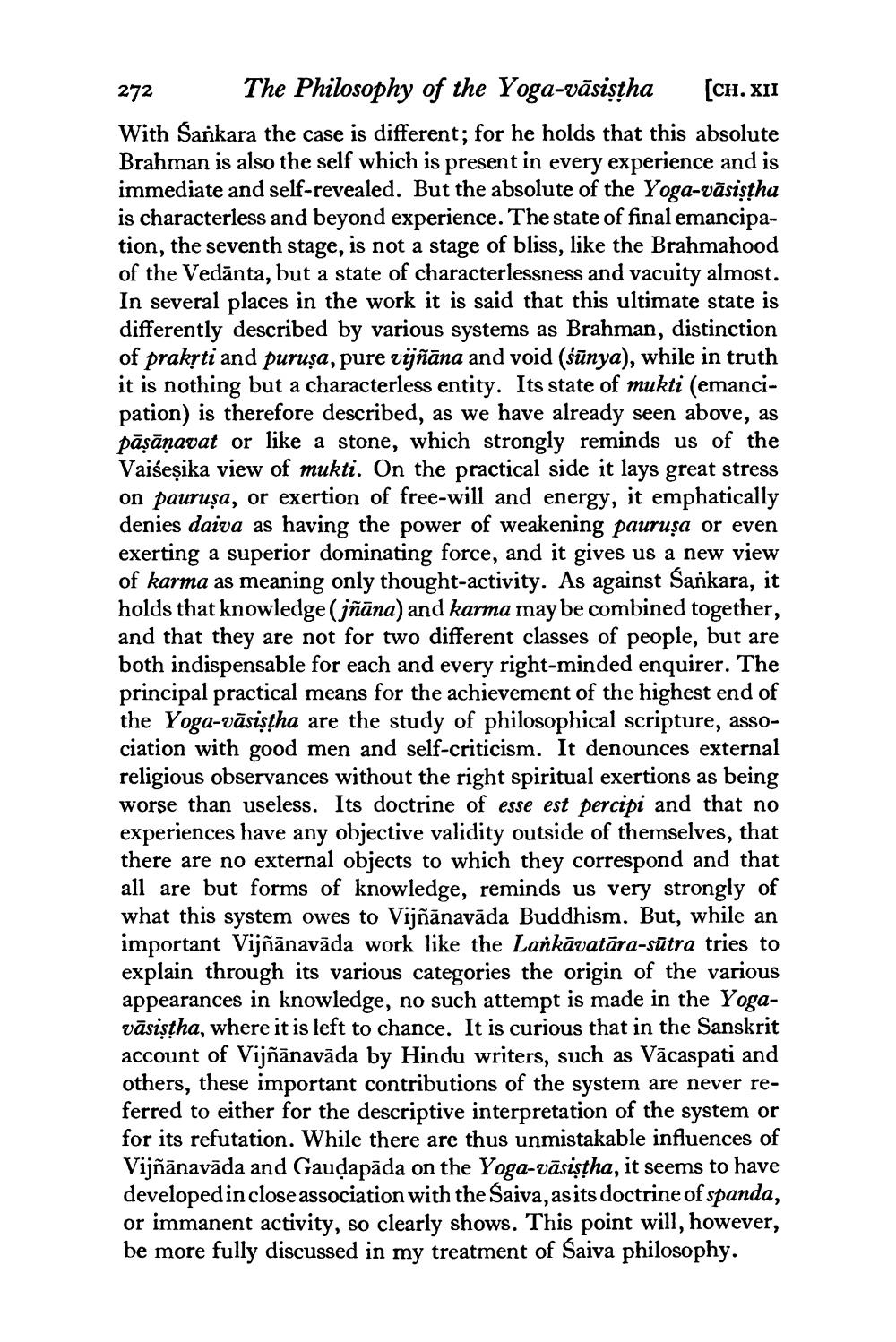________________
272 The Philosophy of the Yoga-vāsistha [CH.XII With Sankara the case is different; for he holds that this absolute Brahman is also the self which is present in every experience and is immediate and self-revealed. But the absolute of the Yoga-vāsistha is characterless and beyond experience. The state of final emancipation, the seventh stage, is not a stage of bliss, like the Brahmahood of the Vedānta, but a state of characterlessness and vacuity almost. In several places in the work it is said that this ultimate state is differently described by various systems as Brahman, distinction of prakyti and purușa, pure vijñāna and void (sūnya), while in truth it is nothing but a characterless entity. Its state of mukti (emancipation) is therefore described, as we have already seen above, as pāşāņavat or like a stone, which strongly reminds us of the Vaiseșika view of mukti. On the practical side it lays great stress on pauruşa, or exertion of free-will and energy, it emphatically denies daiva as having the power of weakening paurușa or even exerting a superior dominating force, and it gives us a new view of karma as meaning only thought-activity. As against Sankara, it holds that knowledge (jñāna) and karma may be combined together, and that they are not for two different classes of people, but ar both indispensable for each and every right-minded enquirer. The principal practical means for the achievement of the highest end of the Yoga-vāsiştha are the study of philosophical scripture, association with good men and self-criticism. It denounces external religious observances without the right spiritual exertions as being worse than useless. Its doctrine of esse est percipi and that no experiences have any objective validity outside of themselves, that there are no external objects to which they correspond and that all are but forms of knowledge, reminds us very strongly of what this system owes to Vijñānavāda Buddhism. But, while an important Vijñānavāda work like the Lankāvatāra-sūtra tries to explain through its various categories the origin of the various appearances in knowledge, no such attempt is made in the Yogavāsiştha, where it is left to chance. It is curious that in the Sanskrit account of Vijñānavāda by Hindu writers, such as Vācaspati and others, these important contributions of the system are never referred to either for the descriptive interpretation of the system or for its refutation. While there are thus unmistakable influences of Vijñānavāda and Gaudapāda on the Yoga-vāsistha, it seems to have developed in close association with the Saiva, as its doctrine of spanda, or immanent activity, so clearly shows. This point will, however, be more fully discussed in my treatment of Saiva philosophy.




